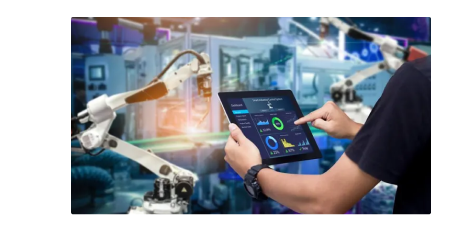#TakeCharge with #Aimshala
How make a career in Aerospace Systems Design Engineer
A career as an Aerospace Systems Design Engineer involves the design and development of aircraft, spacecraft, satellites, and missiles. To pursue this career path, individuals typically need a strong academic background in aerospace engineering, mechanical engineering, or a related field. A bachelor's degree is essential, followed by specialization through master's or doctoral programs. Gaining practical experience through internships, co-op programs, or working on aerospace projects enhances employability. Networking with professionals in the aerospace industry and staying updated with the latest technologies and regulations are also crucial. With a blend of education, experience, and a passion for aviation and space exploration, one can build a rewarding career dedicated to advancing aerospace systems.
Career in Aerospace Systems Design Engineer
What are the roles and responsibilities in Aerospace Systems Design Engineer?
- Designing Aerospace Systems : Aerospace Systems Design Engineers create and develop designs for aircraft, spacecraft, and related systems, ensuring they meet safety and performance standards.
- Simulation and Testing : They conduct simulations and tests to evaluate the performance of designs under various conditions and make necessary adjustments.
- Collaboration with Cross-Functional Teams : Aerospace Engineers work closely with other engineers, project managers, and stakeholders to ensure design feasibility and compliance with regulations.
- Documentation and Reporting : They prepare detailed documentation of designs, test results, and specifications to communicate findings and support regulatory approvals.
- Continuous Improvement : Aerospace Systems Design Engineers engage in ongoing research and development to improve existing designs and integrate new technologies.
What education is required to study Aerospace Systems Design Engineer
Check out the dates of the total number of candidates who have appeared in the CUET 2022 exam from the below table.
Stream |
Graduation |
After Graduation |
After Post Graduation |
|
|
Path 1 |
Completion of high school with a focus on mathematics, physics, and computer science. |
Bachelor of Science in Aerospace Engineering or related fields. |
Master's degree in Aerospace Engineering or specialized fields such as Propulsion or Structural Engineering. |
Ph.D. in Aerospace Engineering for those pursuing research or academic careers. |
|
Path 2 |
Completion of high school with emphasis on engineering principles or vocational training. |
Bachelor's degree in Mechanical Engineering or related fields. |
Master's degree in Aerospace Engineering or related fields. |
Certifications in specialized aerospace technologies or project management. |

Feeling unsure about
your future?
Let's find the perfect career path for you!
with AI-powered career
guidance

What are the key skills required for Aerospace Systems Design Engineer
- Analytical Skills - These skills are crucial for interpreting data and making informed decisions based on engineering principles and test results.
- Communication Skills - Effective communication is vital for sharing design concepts and collaborating with multidisciplinary teams.
- Problem-Solving Skills - The ability to identify issues in designs and develop innovative solutions is essential for success in aerospace engineering.
- Technical Skills - Proficiency with CAD software and engineering tools is important for conducting design work and simulations.
- Project Management Skills - Managing engineering projects efficiently, including budgeting and timelines, is key to successful outcomes in aerospace design.
What are the career opportunities in Aerospace Systems Design Engineer?
- Aeronautical Engineer - Aeronautical Engineers focus on the design and development of aircraft, ensuring compliance with safety standards.
- Propulsion Engineer - Propulsion Engineers specialize in the design and optimization of engines and propulsion systems for aircraft and spacecraft.
- Systems Engineer - Systems Engineers work on the integration of various subsystems in aerospace projects, ensuring functionality and performance.
- Flight Test Engineer - Flight Test Engineers conduct tests on aircraft and spacecraft to evaluate performance and safety during flight.
- Aerospace Project Manager - Project Managers oversee aerospace projects, coordinating teams and resources to ensure successful project delivery.
What is the salary and demand for Aerospace Systems Design Engineer?
- Salary Overview - The typical salary for Aerospace Systems Design Engineers ranges from $70,000 for entry-level positions to over $130,000 for experienced professionals, with variations based on education and location.
- Regional Salary Variations - Salaries can vary significantly by region; for example, Aerospace Engineers in urban areas or regions with major aerospace companies may earn more than those in less populated areas.
- Current Job Market Demand - The demand for Aerospace Systems Design Engineers is growing due to advancements in aviation technology and space exploration initiatives.
- Future Demand Projections - Future demand for Aerospace Engineers is expected to rise as the aerospace industry continues to innovate and expand.
Leading companies for careers in Aerospace Systems Design Engineer

Boeing

Lockheed Martin

Northrop Grumman

Airbus

Raytheon Technologies

General Dynamics

Honeywell Aerospace

SpaceX
What are the best colleges for Aerospace Systems Design Engineer in India?
Undergraduate
College |
Location |
Website |
|
Indian Institute of Technology Bombay |
Mumbai |
https://www.iitb.ac.in |
|
Indian Institute of Technology Kharagpur |
Kharagpur |
https://www.iitkgp.ac.in |
|
Indian Institute of Technology Madras |
Chennai |
https://www.iitm.ac.in |
|
Punjab Engineering College |
Chandigarh |
https://pec.ac.in |
|
National Institute of Technology, Warangal |
Warangal |
https://www.nitw.ac.in |
Postgraduate
College |
Location |
Website |
|
Indian Institute of Technology Bombay |
Mumbai |
https://www.iitb.ac.in |
|
Indian Institute of Technology Kharagpur |
Kharagpur |
https://www.iitkgp.ac.in |
|
Indian Institute of Technology Madras |
Chennai |
https://www.iitm.ac.in |
|
Indian Institute of Space Science and Technology |
Thiruvananthapuram |
https://www.iist.ac.in |
|
Indian Institute of Aeronautics |
Patna |
https://www.iiaindia.in |
What are the best colleges for Aerospace Systems Design Engineer in Abroad?
College |
Location |
Website |
|
Massachusetts Institute of Technology |
Cambridge, Massachusetts, USA |
https://www.mit.edu |
|
California Institute of Technology |
Pasadena, California, USA |
https://www.caltech.edu |
|
Stanford University |
Stanford, California, USA |
https://www.stanford.edu |
|
University of Michigan |
Ann Arbor, Michigan, USA |
https://www.umich.edu |
|
Imperial College London |
London, United Kingdom |
https://www.imperial.ac.uk |
What are the top entrance exams in India for pursuing a career in Aerospace Systems Design Engineer
College |
Tentative Date |
UG/PG |
Important Elements |
Website |
|
Indian Institute of Technology Bombay |
April |
Postgraduate |
Engineering Mathematics, Physics, and General Studies. |
https://www.iitb.ac.in |
|
Indian Institute of Technology Kharagpur |
May |
Undergraduate |
Mathematics, Physics, and Chemistry. |
https://www.iitkgp.ac.in |
|
Indian Institute of Technology Madras |
June |
Postgraduate |
Engineering Mathematics, Dynamics, and Aircraft Systems. |
https://www.iitm.ac.in |
|
Indian Institute of Space Science and Technology |
July |
Undergraduate |
Physics, Mathematics, and General Knowledge. |
https://www.iist.ac.in |
|
Massachusetts Institute of Technology |
January |
Postgraduate |
Mathematics, Physics, and Analytical Skills. |
https://www.mit.edu |
Pros & Cons of a Career in Aerospace Systems Design Engineer
Pros
- Aerospace Systems Design Engineers contribute to innovative projects that can lead to advancements in aviation and space exploration.
- The field offers competitive salaries, especially for those with advanced degrees and specialized skills.
- Professionals in this field play a crucial role in improving safety and efficiency in air and space travel.
- The career provides opportunities for continuous learning and advancement in a rapidly evolving industry.
Cons
- The job can be demanding with long hours, especially during project deadlines or testing phases.
- Some roles may require extensive travel to testing sites or production facilities, which can be taxing.
- Funding uncertainties in aerospace projects can lead to job instability or limited resources.
- The work can sometimes be isolating, particularly for those engaged in extensive research away from collaborative environments.
Did you find this information helpful?


Report
0 out of 0 found this helpful


